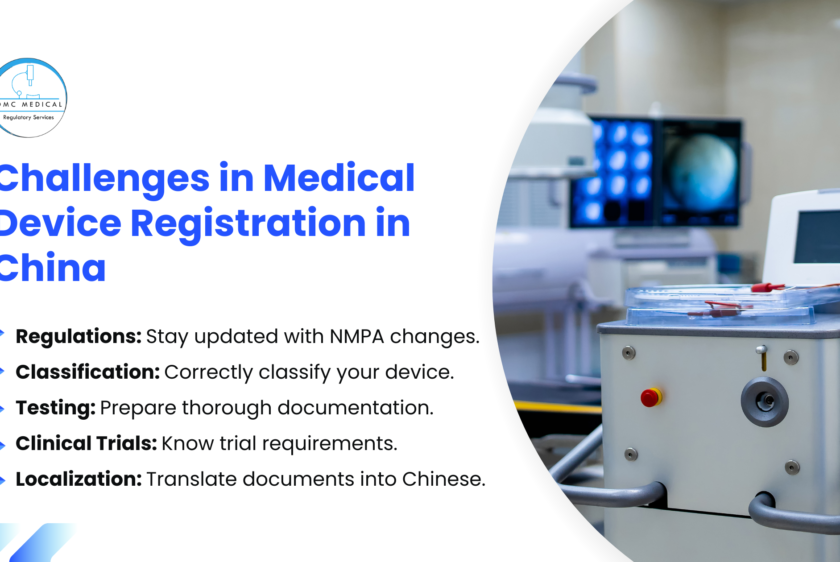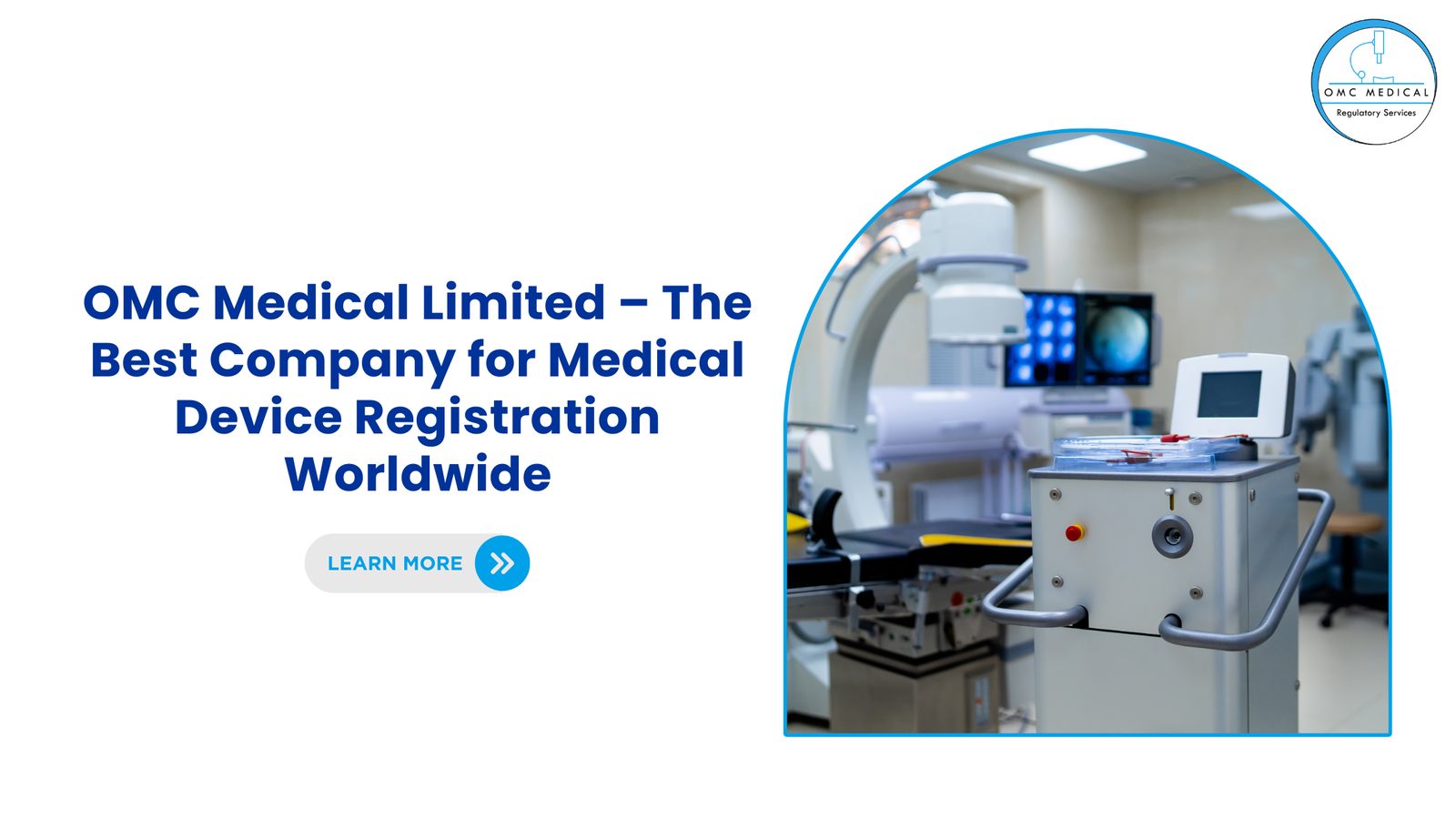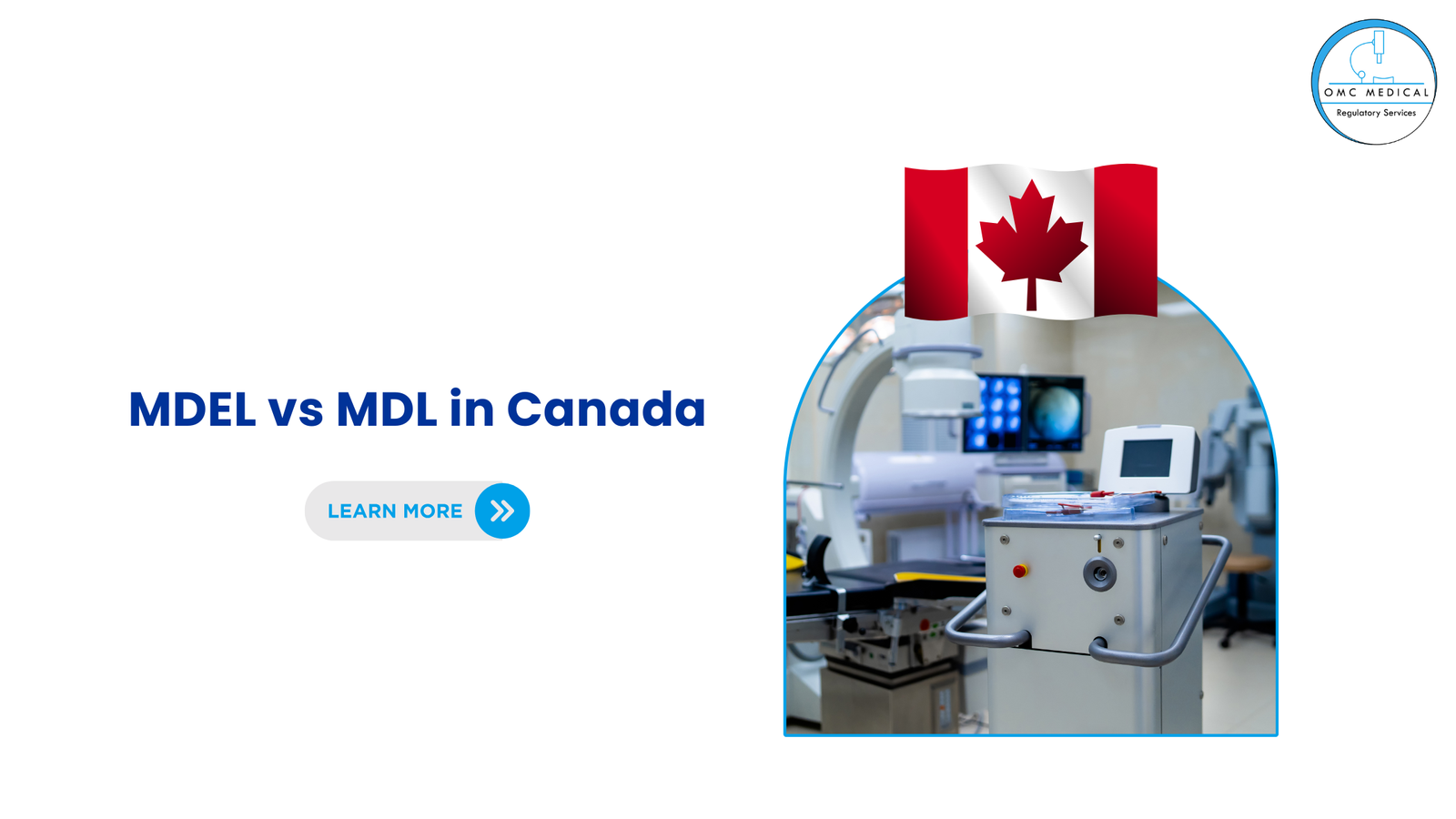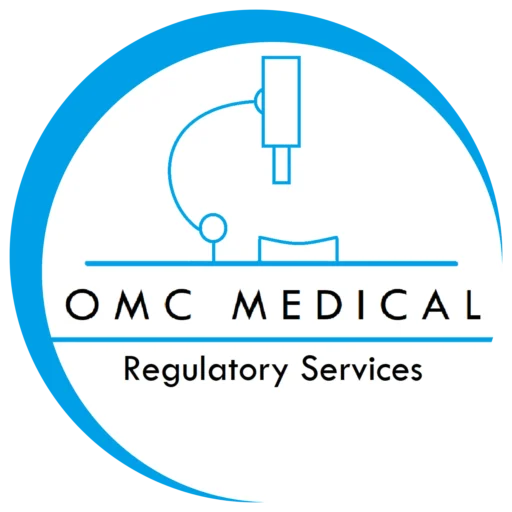Navigating the medical device registration process in China can be complex due to stringent regulatory requirements, evolving standards, and regional variations. Understanding common challenges and how to overcome them is crucial for a successful market entry. This blog highlights key obstacles and provides actionable solutions to streamline the process.
1. Understanding Regulatory Requirements
China’s National Medical Products Administration (NMPA) has strict regulatory requirements, which often change. Understanding the latest regulations, including the Medical Device Registration Administrative Measures and the Good Manufacturing Practice (GMP) for Medical Devices, can be overwhelming.
- Stay updated on NMPA regulations by regularly checking official notices and engaging with regulatory consultants.
- Participate in industry seminars, workshops, and training sessions.
- Work with a local regulatory partner who understands the nuances of compliance.
2. Classification of Medical Devices
Incorrect classification of medical devices can lead to delays and additional costs. China classifies medical devices into Class I (low risk), Class II (moderate risk), and Class III (high risk), with increasing regulatory scrutiny.
- Refer to NMPA’s classification catalogue and guidelines for proper classification.
- If uncertain, submit a classification request to NMPA for official clarification.
- Consult with regulatory experts like OMC Medical to avoid misclassification.
3. Stringent Testing and Documentation Requirements
It’s known for being rigorous, requiring a broad array of technical and clinical documentation and testing. To ensure their products are safe and effective for use, businesses need to provide a significant amount of data, including safety and efficacy information, as part of their registration application.
4. Clinical Evaluation Requirements
Clinical evaluation is mandatory for many medical devices. However, determining whether clinical trials are required, and navigating China’s Good Clinical Practice (GCP) requirements, can be challenging.
- Check if your device qualifies for clinical evaluation exemption by referring to NMPA’s exemption list.
- If trials are required, conduct them in NMPA-approved institutions in China.
- Prepare robust clinical evaluation reports with data from China or equivalent markets to support safety and effectiveness claims.
5. Localization of Technical Documentation
NMPA requires all technical documentation, including product descriptions, instructions for use, and labelling, to be in Chinese. Poor translation or non-compliance with format requirements can cause rejections.
- Work with professional regulatory translators familiar with medical device terminology.
- Ensure all documentation follows NMPA’s format and submission guidelines.
- Conduct a thorough review to prevent inconsistencies and errors.
6. Registration Testing Requirements
China mandates in-country type testing at NMPA-designated laboratories for most medical devices. Testing timelines and costs can vary, and failure to meet standards can delay approval.
- Engage with an NMPA-recognized testing lab early to understand specific requirements.
- Conduct pre-testing in accredited labs to ensure compliance before official submission.
- Maintain open communication with the testing facility to address issues promptly.
7. Quality Management System (QMS) Compliance
Manufacturers must comply with China’s Good Manufacturing Practice (GMP) for medical devices, and some Class II and Class III devices require on-site inspections.
- Implement a robust QMS aligned with China’s GMP and ISO 13485.
- Prepare for potential audits by maintaining comprehensive records and compliance documentation.
- Work with local regulatory partners to facilitate site inspections and resolve non-conformities.
8. Lengthy Registration Timelines
The registration process for Class II and III devices can take 12–24 months due to extensive testing, clinical evaluation, and regulatory reviews.
- Plan ahead and factor in realistic timelines for testing, clinical trials, and document preparation.
- Use priority approval pathways if applicable (e.g., innovative medical device registration route).
- Maintain proactive communication with the NMPA and seek expert guidance to avoid unnecessary delays.
Conclusion
Registering medical devices in China presents significant challenges, but with proper planning, expert guidance, and strategic execution, these obstacles can be overcome. Staying informed on regulatory changes, working with experienced local partners, and ensuring compliance with all NMPA requirements will facilitate a smoother registration process and successful market entry.
Navigating the NMPA regulations for medical device registration in China can be complex, but OMC Medical is here to help. We specialize in Medical Device Registration, Product Classification, Quality Assurance, ensuring compliance with NMPA requirements. With a proven track record in the industry, we offer efficient solutions to guide you through the process.
Book your free consultation today and let us help you navigate the NMPA requirements with ease.







